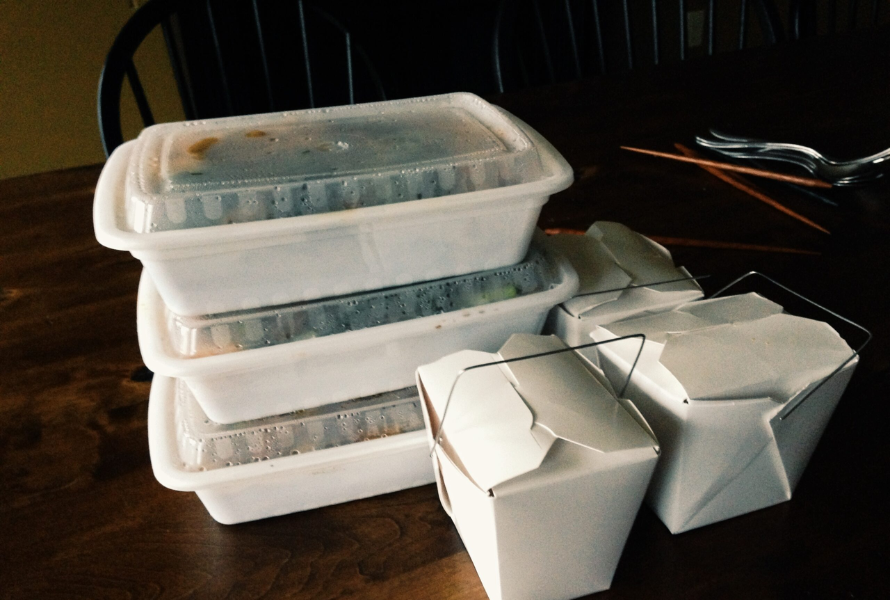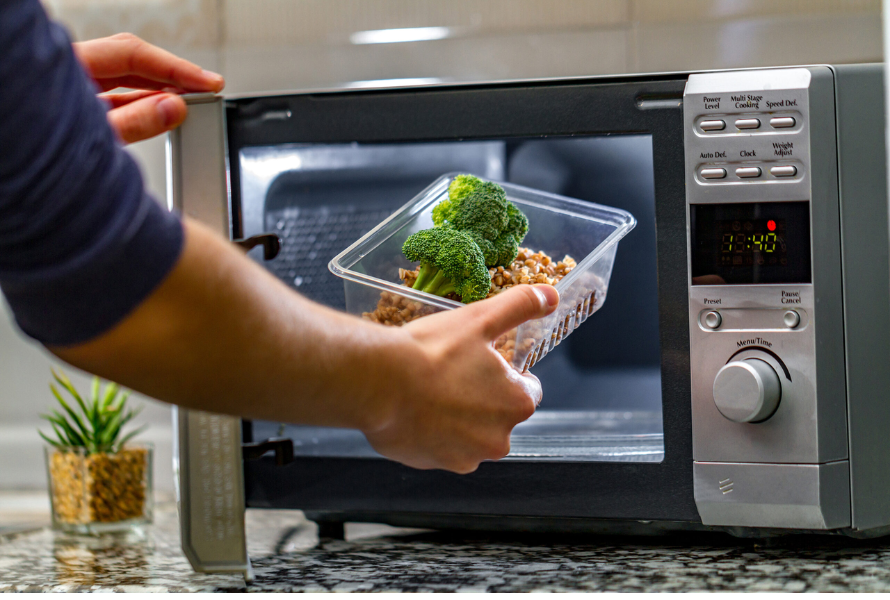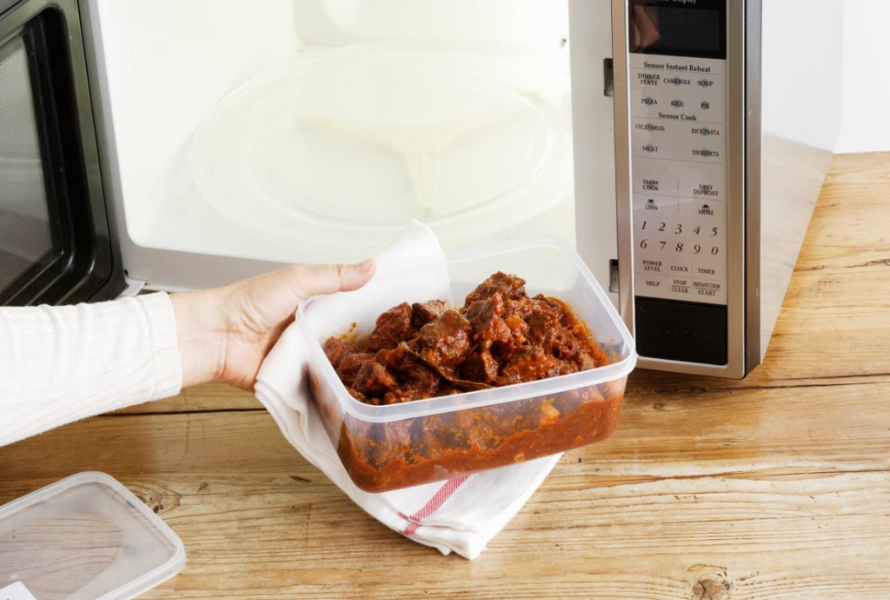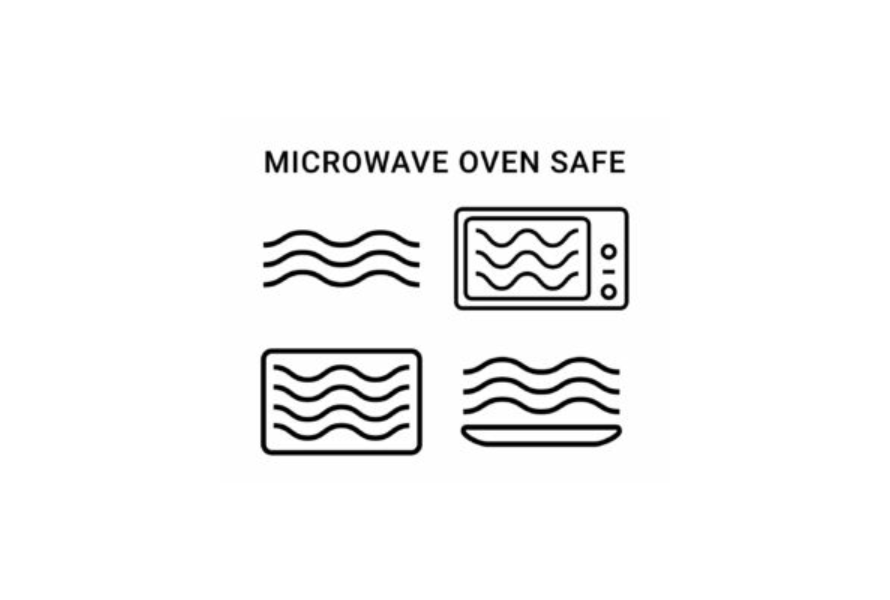The use of plastic containers in microwaves is becoming increasingly popular due to their convenience and flexibility. To minimize health risks, it is important to identify microwave-safe plastics. By following this article, you can safely use plastic containers in microwaves.
1. Types of microwave-safe plastic
Polypropylene (PP) and polycarbonate (PC) are two types of common microwave-safe plastics. PP is popular for food containers, while PC is versatile for various microwave-safe products. However, it's crucial to consider BPA concerns with PC plastics, especially for baby products.
- Polypropylene (PP): Polypropylene is a durable and heat-resistant plastic that can withstand high temperatures without melting or releasing harmful chemicals. It is commonly used in microwave-safe food containers, such as microwaveable meal prep containers, reusable storage containers, and microwave-safe plastic wraps.
Read more: Is PP Plastic safe?
- Polycarbonate (PC): Polycarbonate is a strong and clear plastic with excellent heat resistance. It has been widely used in various applications, including microwave-safe baby bottles, microwave-safe kitchen utensils, and microwave-safe measuring cups. However, due to concerns about potential leaching of the chemical bisphenol A (BPA), it is advisable to choose BPA-free alternatives, especially for baby bottles.
Read more: Is PC plastic safe?
In addition to PP and PC, the following types of plastics are also considered safe for microwave use:
- High-Density Polyethylene (HDPE): HDPE is a strong and versatile plastic known for its heat resistance and low risk of leaching chemicals. It is often used in microwave-safe food storage containers, plastic bottles, and microwave-safe plastic bags.
- Polyethylene Terephthalate (PET or PETE): PET is a lightweight and transparent plastic that is commonly used for food and beverage packaging, including microwave-safe plastic bottles, microwave-safe food trays, and microwave-safe plastic wraps. While PET is generally considered microwave-safe, it is recommended to avoid microwaving foods or beverages in PET bottles that have been previously used (When a used PET bottle is exposed to high temperatures in a microwave, it may be at risk of damage or deformation).
Read more: Is PET plastic safe?
- Polyethylene (PE): Polyethylene is a versatile plastic with excellent heat resistance. It is commonly used in microwave-safe plastic wraps, microwave-safe plastic bags, and microwave-safe food storage containers. Look for specific labeling or symbols to ensure that the particular type of polyethylene used is suitable for microwave use.

Microwave-safe plastics ensure confident use of plastic containers in the microwave.
2. Common concerns
Common concerns when using plastics in the microwave revolve around potential health and safety issues. Heating certain plastics can lead to the release of harmful chemicals into food, posing potential health risks. Two common concerns are potential release of harmful chemicals and melting or warping of plastic containers.
- Potential release of harmful chemicals: One of the main concerns is the possibility of certain plastics releasing harmful chemicals, such as BPA and phthalates, into food when heated. These chemicals have been linked to health issues like hormonal disruptions and developmental problems.
- Melting or warping of plastic containers: Another concern is the risk of plastic containers melting or warping when exposed to high temperatures in the microwave. This can lead to the release of toxic fumes and compromise the integrity of the container, potentially causing burns or leaks.

Using plastics in the microwave raises concerns about the potential release of harmful chemicals
In order to address these concerns and ensure the safety of microwave use, it is important to take the following precautions:
- Choose microwave-safe plastics: To mitigate the risk of chemical leaching, it is crucial to select plastics that are specifically labeled as "microwave-safe" or those with symbols indicating their suitability for microwave heating. Microwave-safe plastics have undergone testing to ensure they can withstand heat without releasing harmful chemicals.
- Avoid using damaged or cracked containers: Another important step is to inspect plastic containers for any signs of damage before using them in the microwave. Damaged or cracked containers can harbor bacteria and potentially release harmful substances. It is best to discard such containers to maintain safety.
- Follow manufacturer's instructions: Adhering to the manufacturer's instructions for safe microwave use is vital. This includes using microwave-safe covers or vented lids to prevent splattering and following recommended heating times and power levels.
Proper maintenance and storage: It is also important to properly maintain and store plastic containers. Avoid exposing them to extreme temperatures, such as placing them in the freezer or near direct heat sources, as this can affect their integrity and safety.

Microwave-safe plastics have undergone testing to ensure they can withstand heat without releasing harmful chemicals.
3. Identifying microwave-safe plastics
Microwave-safe plastics are designed and tested to withstand the heat generated in the microwave without leaching harmful chemicals into food. Moreover, microwave-safe plastics are approved by regulatory bodies and labeled. To identify plastics suitable for microwave use, follow these guidelines:
- Look for microwave-safe plastics labeling: Many manufacturers label their plastic containers as "microwave-safe" or include a statement indicating their suitability for use in the microwave. This labeling is a clear indication that the plastic has been tested and approved for microwave heating.
- Check for specific microwave-safe symbols: Look for specific symbols on the plastic containers. The most common symbol is a microwave icon, which resembles three wavy lines stacked on top of each other. This symbol indicates that the plastic is safe to use in the microwave.
- Examine the packaging or product information: Read the packaging or product information carefully. Manufacturers often provide information about the microwave safety of their plastic containers. Look for statements or instructions related to microwave use.
- Identify heat-resistant plastics: Certain plastics are more heat-resistant and suitable for microwave use. Look for plastics such as polypropylene (PP) and high-density polyethylene (HDPE) as they are known to have a higher tolerance for heat and are less likely to warp or release harmful chemicals when heated.
- Avoid hazardous material symbols: Check for symbols on the plastic containers that indicate the presence of hazardous materials. For example, symbols like a crossed-out wine glass or a triangle with an exclamation mark may suggest the presence of harmful substances. Avoid using plastics with such symbols in the microwave.
- Consult the product manual or contact the manufacturer: If you are uncertain about the microwave safety of a specific plastic container, refer to the product manual or contact the manufacturer directly. They can provide guidance and information on whether the plastic is suitable for microwave use.

Remember, even if a plastic item is labeled as microwave safe, it's still important to follow the manufacturer's instructions.
Moreoever, when identifying plastics suitable for microwave use, it is helpful to be aware of standard labeling and symbols commonly found on plastic containers. Here is an overview of these microwave-safe plastics labeling and symbols:
- "Microwave-safe" or "Safe for microwave" labeling: Manufacturers often label plastic containers explicitly as "microwave-safe" or "safe for microwave." This labeling indicates that the plastic has been tested and approved for use in the microwave.
- Microwave-safe symbol: Look for a specific symbol on the plastic containers that indicates they are suitable for microwave use. The most common symbol is a microwave icon, which resembles three wavy lines stacked on top of each other. This symbol signifies that the plastic is safe to use in the microwave.
- Resin identification code: Plastic containers often have a resin identification code, which is a number inside a triangle of arrows. While this code does not specifically indicate microwave safety, it provides information about the type of plastic used. Plastics labeled with the numbers 1, 2, 4, and 5 are generally considered microwave-safe.
- Heat-resistant plastic containers: Look for plastic containers made from heat-resistant materials. Polypropylene (PP) and High-Density Polyethylene (HDPE) are commonly used microwave-safe plastics that can withstand heat without warping or releasing harmful chemicals.
- Absence of hazardous material symbols: Avoid plastic containers with symbols indicating the presence of hazardous materials. For instance, a crossed-out wine glass symbol or a triangle with an exclamation mark may suggest the presence of harmful substances. These plastics should not be used in the microwave.

By being familiar with these labeling and symbols, you can make informed decisions about using plastics in the microwave
4. Safety Guidelines
When using plastic containers in the microwave, it's essential to follow safety guidelines to ensure both your safety and the longevity of the containers, especially microwave-safe plastics. Here are some practical tips:
- Choose microwave-safe containers: Select plastic containers that are explicitly labeled as microwave-safe plastics or those with symbols indicating their suitability for microwave use. These containers have been tested to withstand the heat of the microwave without releasing harmful chemicals.
- Inspect for damage: Before using a plastic container in the microwave, inspect it for any signs of damage, such as cracks, warping, or discoloration. Damaged containers can release harmful substances or break during heating. It's best to discard damaged containers and replace them with new ones.
- Avoid tightly sealed containers: When using plastic containers in the microwave, it's important to vent them properly to prevent pressure buildup. If a container has a lid, make sure it is either vented or loosely placed on top to allow steam to escape. This helps avoid potential splattering or container deformation.
- Use microwave-safe covers: If you need to cover the container while heating in the microwave, choose microwave-safe covers or use microwave-safe plastic wraps. These covers prevent food from splattering and help retain moisture. Make sure to follow the manufacturer's instructions for using these covers.
- Follow recommended heating times and power levels: It's crucial to follow the recommended heating times and power levels provided by the manufacturer. Overheating plastic containers can lead to warping, melting, or the release of harmful chemicals. If in doubt, err on the side of caution and use lower power levels or shorter heating times.
- Avoid extreme temperatures: Plastic containers should not be exposed to extreme temperatures. Avoid placing them in the freezer or near direct heat sources, as this can affect their integrity and safety. Allow heated containers to cool down before refrigerating or freezing food in them.
- Hand wash or use dishwasher-safe plastics: Check the manufacturer's instructions for cleaning plastic containers. Some plastics are dishwasher-safe, while others may require hand washing. Avoid using abrasive cleaners or scrubbers that can scratch or damage the plastic.
- Store properly: When storing plastic containers, stack them carefully to prevent cracking or deformation. Avoid placing heavy objects on top of them. Keep them in a cool, dry place away from direct sunlight or heat sources.
5. Conclusion
The types of plastic that are generally considered safe for use in the microwave include:
- Polypropylene (PP)
- High-Density Polyethylene (HDPE)
- Polyethylene Terephthalate (PET or PETE)
- Polycarbonate (PC)
- Polyethylene (PE)
Microwave-safe plastics are known for their heat resistance, stability, and low risk of leaching harmful chemicals when heated. They are commonly used in microwave-safe food containers, storage containers, plastic wraps, bottles, and bags. However, it's important to ensure that the specific plastic containers are labeled as "microwave-safe" or have appropriate symbols indicating their suitability for use in the microwave. Following the manufacturer's instructions and safety guidelines is crucial for safe microwave use with plastic containers.
For more information about the plastic industry and microwave-safe plastic products, please contact us or visit our blog.